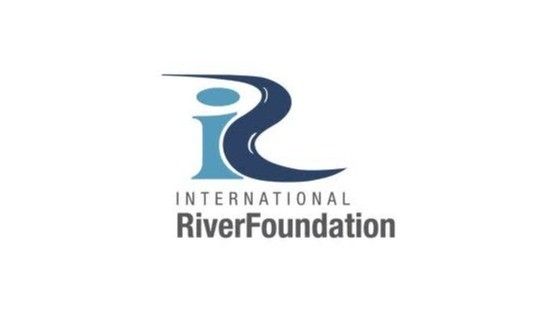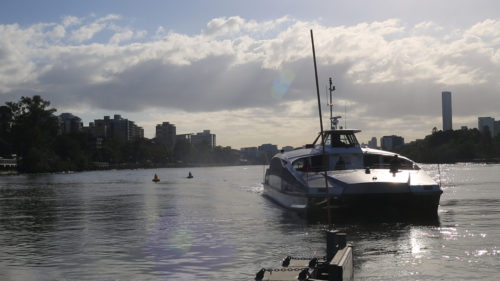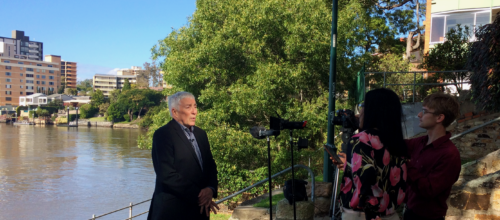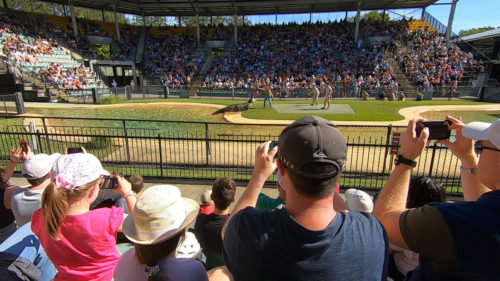Jamie's Australian Adventures
Jamie Currie ·
The tires squeaked as the airplane touched down. A few
minutes later, I stepped out into steaming air on the far side of the world.
Even in the middle of winter, Brisbane can feel almost tropical. Heat shimmered
on the tarmac in the morning light. Flocks of lorikeets flashed yellow, red and
green as they raced each other through the treetops. In the distance, Moreton
bay glinted deep orange, reflecting the hazy outline of the rising sun.

I had recently been given the opportunity to travel to Australia through a partnership with the International River Foundation (IRF). The IRF is an organization of scientists and environmental activists dedicated to improving the health of the world’s rivers, and a large proponent of science communication work. IAN has an ongoing partnership with the IRF, who regularly produce books documenting their restoration partners’ progress, regional Riverprize competitions, and twinning projects with other rivers in need. However, the IRF’s primary tool to communicate restoration science and to push for good restoration practices is celebration. Every year, they host the International Riversymposium, where they celebrate the best river restoration projects around the world. The best of these projects are awarded the Thiess International Riverprize, a highly coveted award recognizing the very best in river restoration and management. My assignment was to assist IRF with the production of a short documentary detailing their organization’s 20-year history, to be shown at this year’s annual Riversymposium in Brisbane, Australia.

After depositing my bags at Dr. Simon Costanzo’s apartment
(the Costanzos very kindly hosted me for several weeks) I rode the CityCat to
IRF offices in the heart of Brisbane. The CityCat is a system of twin-hulled
ferries that run every 15-30 minutes along the Brisbane River. Since the river
bisects the entire city, the CityCat system is as efficient as any other public
transportation in Brisbane, and far more scenic. After a short ride, I met up
with Dr. Eva Abal, CEO of the IRF, and Sylvia Liu, IRF’s communications
officer.

Over the next two weeks, I worked to integrate footage of
previous Riverprize winners into a single cohesive story of the Riverprize’s
history. The International Riverprize was first awarded in 1999, as part of a
collaboration between the Brisbane City Council, then lord mayor of Brisbane,
Jim Soorley (the man widely credited for launching the CityCat system), and
Martin Albrecht of the Thiess company. I interviewed both Jim and Martin, along
with the IRF’s chair, Dr. Paul Greenfield, to collect their own takes on the
international Riverprize’s successes over the years. Martin put it the most aptly,
when he told me that “the journey began with a dream, and that dream was to
create the Nobel Prize for river restoration projects.”

After completing the work for the IRF, I decided to take some time to explore Australia. My first stop was the Australia Zoo, home of my childhood hero Steve Irwin. Located about an hour south of Brisbane, the Australia Zoo boasts an impressive menagerie, made all the more interesting by the zoo’s unique policy allowing visitors to have close contact with many of the animals. I spent an electrifying day wandering past tropical birds, venomous snakes, large land predators, adorable otters who chirped and squeaked, and russet-colored kangaroos who would hop over to inspect me for tasty morsels and to have their coats stroked.

I also spent a few hours in the world-famous Crocoseum. This stadium, standing about 4 stories tall, is one of the testaments to the crocodile hunter’s surviving legacy. Every day, zoo staff throw performances with the zoo’s star attractions: the big Australian saltwater crocodiles. One of Steve Irwin’s self-proclaimed goals was to share his knowledge about these animals, and by doing so, to impart some understanding that these creatures are not necessarily dangerous if handled correctly, and that they should be cherished as a unique and valuable part the Australian landscape. And the experience was, indeed, unique. And spectacular. I watched Terri, Bindi, and Robert Irwin feeding a colossal 12 – foot saltwater crocodile named Monty that had been originally captured in 1975. The crowd applauded appreciatively as the zoo team would dangle meat in front of the croc, who would then snap whole chickens out of the teams’ hands. As this was happening, one of the Irwins would talk about the croc, describing the beauty and power of the animal while being careful to emphasize the croc’s importance and vulnerability.

As far as science communication is concerned, the Australia zoo leads by example – getting people as close as safely possible to the animals, and allowing people to form a connection with the zoo’s wards. At the same time, they are careful to inspire the same feelings of passionate commitment that Steve Irwin pushed through his documentaries and life’s work. They supplement experiences with the animals with information placards (which are stylistically similar to IAN’s) and zoo staff interpreting for visitors. The process of interpretation is a particularly import form of science communication for zoos and aquariums, because it allows the audience to form another emotional connection with the topic, through the language and personality of the presenter. And if there is one form of science Communication the Irwins have perfected, it’s harnessing a gung-ho personality to energize and inspire an audience. IAN uses report cards to try to achieve a similar effect, while the IRF uses an ‘inspire by celebration’ approach. All three are highly valid, but seeing the juxtaposition of these approaches really drove home the need for multifaceted strategies when communicating science.

During the rest of my journey, I spent time on the great
barrier reef and up in the Daintree rainforest. The wildlife experiences I had
there could fill a whole second blog, so suffice to say that I encountered a
menagerie of rare and exotic animals, and enjoyed every second of watching them
bark, howl, bubble, grunt, squeak and slither. Leaving Oz was a bit of a wrench, but I did
gain a modicum of comfort from the knowledge that I had been inspired by the
plurality of organizations out there using diverse approaches to communicate
environmental science and to inspire audiences around the world.


